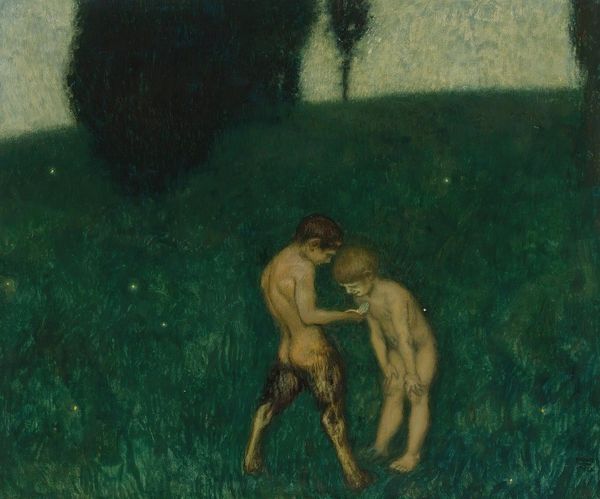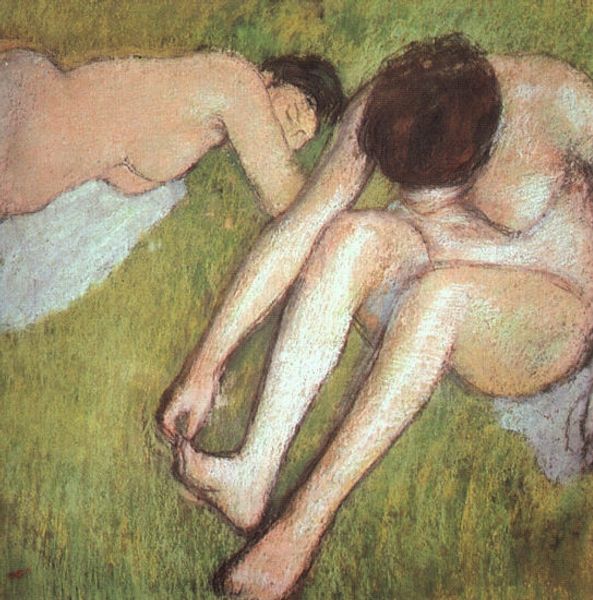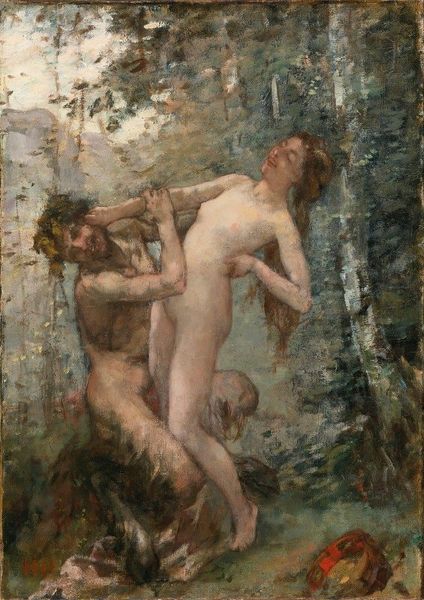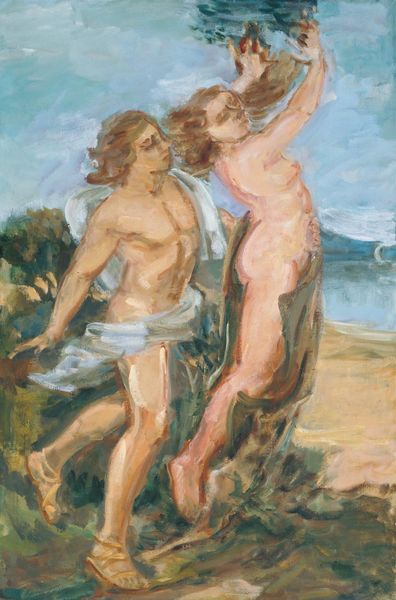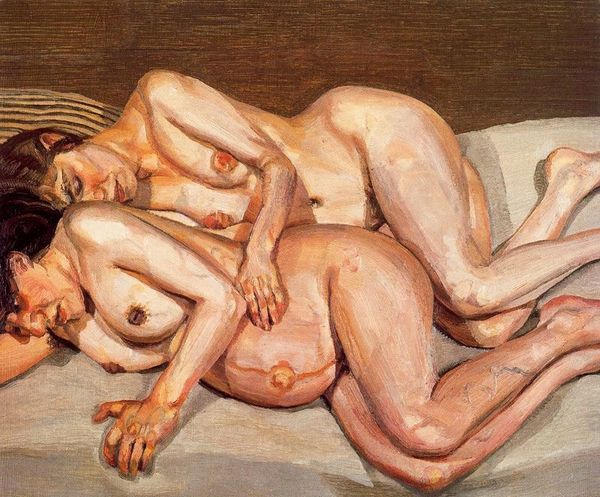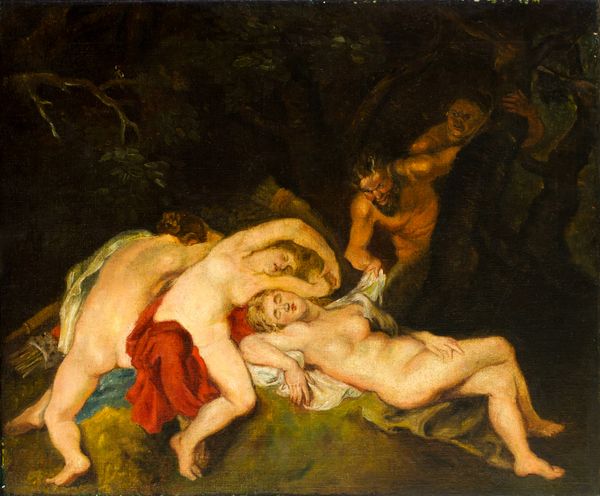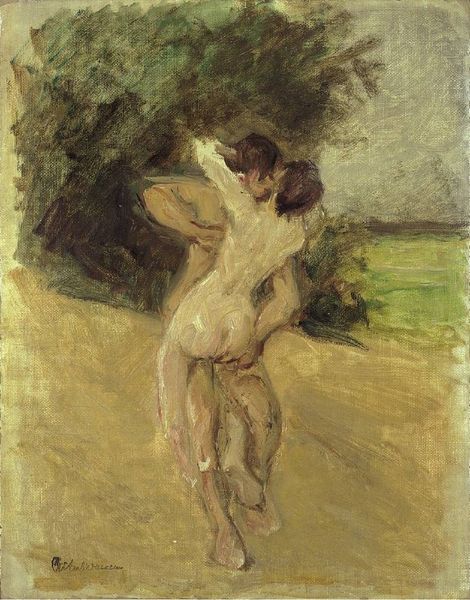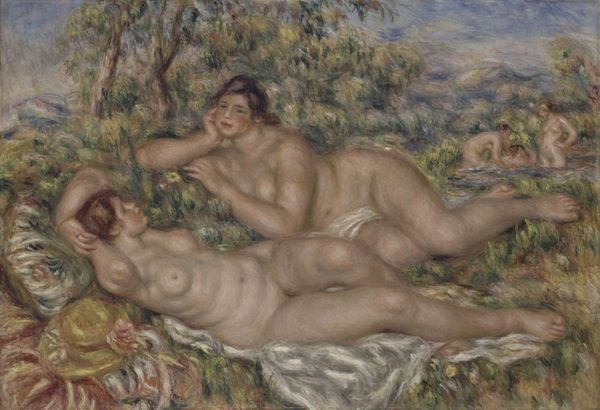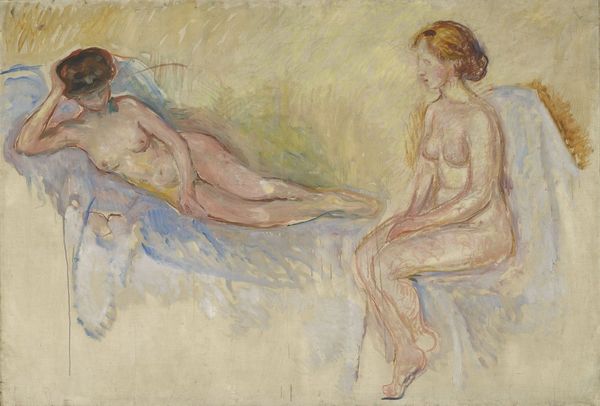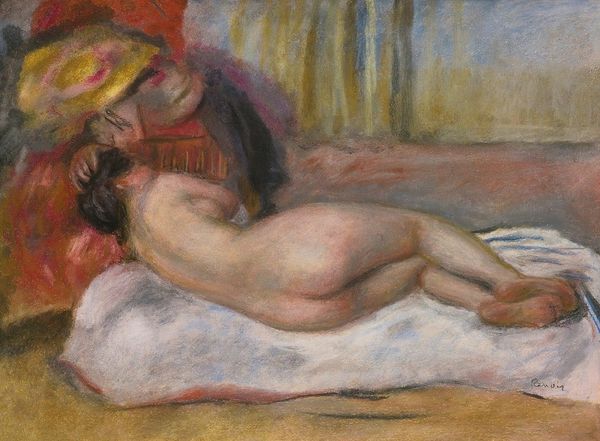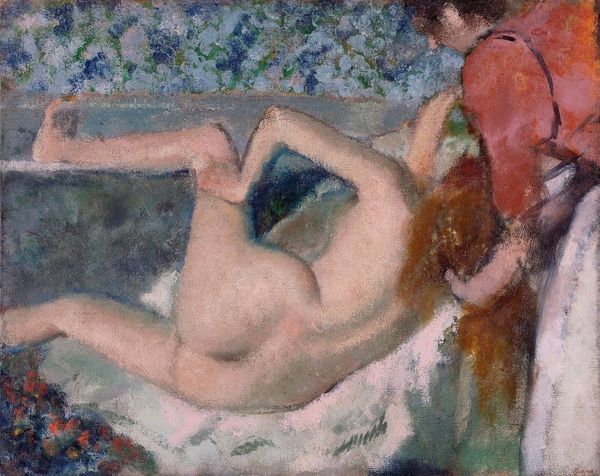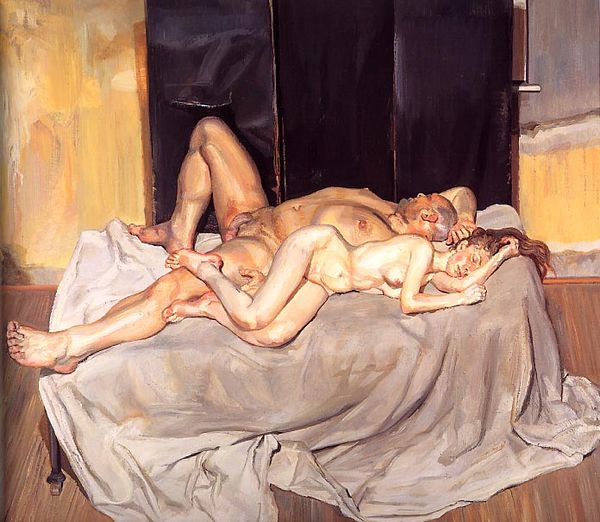
Copyright: Public domain
Eero Järnefelt painted "Lekande Barn" in Florence in 1900 with oil on canvas. It depicts two nude children wrestling on a grassy ground under birch trees. The subject of childhood innocence connects to the wider cultural context of the late 19th century, when childhood became recognized as a distinct and important phase of life worthy of artistic representation. The image creates meaning through its naturalistic style and idealized portrayal of the children. Painted during a time of growing Finnish nationalism, the scene might also reference the importance of nature and the celebration of rural life. Järnefelt had trained at the Academy of Fine Arts in St. Petersburg, one of the most important art institutions in Russia at the time, and had travelled extensively to study naturalism, further influencing his style and subject matter. "Lekande Barn" does not seem to critique any particular social institution, but it is interesting to think how it may have contributed to contemporary discussions about childhood education and the importance of play. Art history is crucial to understanding the painting’s cultural meaning. By consulting historical sources and researching the artistic and social context in which Järnefelt lived, we can gain a deeper appreciation of this artwork.
Comments
No comments
Be the first to comment and join the conversation on the ultimate creative platform.
